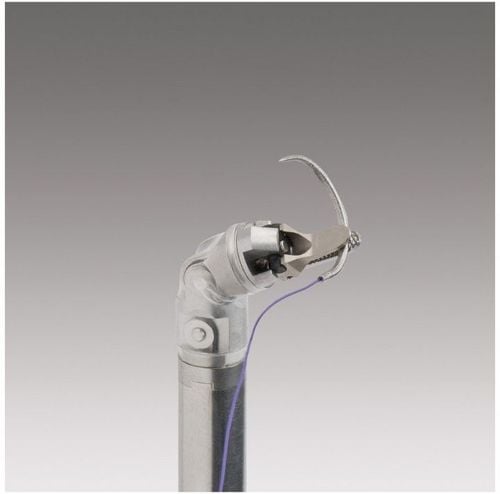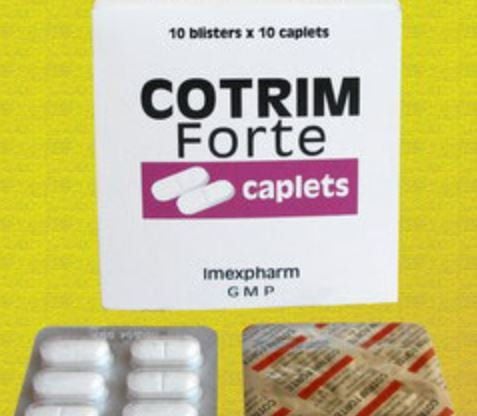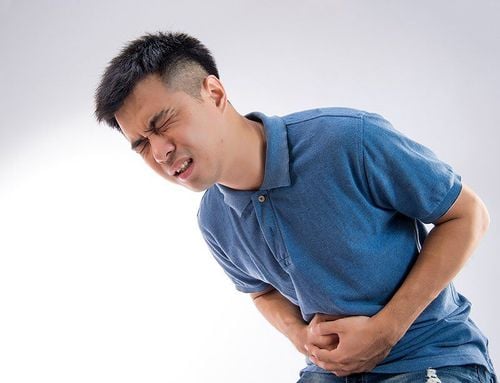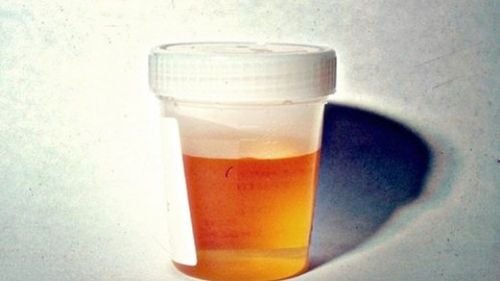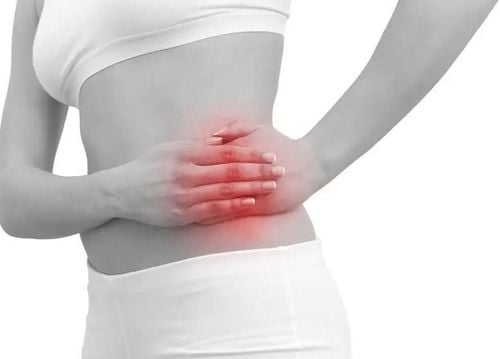This is an automatically translated article.
The article is professionally consulted by Master, Doctor Le Nhat Nguyen - Obstetrician and Gynecologist - Department of Obstetrics and Gynecology - Vinmec Da Nang International General HospitalThe pelvis is the last part of the spine, helping to support the entire body. This agency is considered the "key" to protect human health. Pain in the pelvic area occurs frequently, especially in the groin and lower abdomen, seriously affecting the health and fertility of men. This symptom also warns that men are suffering from dangerous diseases. Below are the diseases that cause pelvic pain in men.
1. Herniated disc
If you have sudden pain in the lower abdomen, you may have a herniated disc. In places of hernia, men often have pain, especially in the pelvic area. Just smiling, coughing or lifting anything can cause pain.2. Urinary tract infection
Pelvic pain in men shows that men have urinary tract infections, in organs such as urethra, ureters, bladder, ... Besides, patients also experience other symptoms such as urinary retention. many times, urine has a strange color, vaginal burning pain, fever,...3. Sexually Transmitted Diseases
Men with pelvic pain can be caused by sexually transmitted diseases such as gonorrhea, syphilis, chlamydia, ... In addition to this symptom, men also have urethritis, discharge in penis, nodules on the skin of the penis, swelling, itching of the penis,...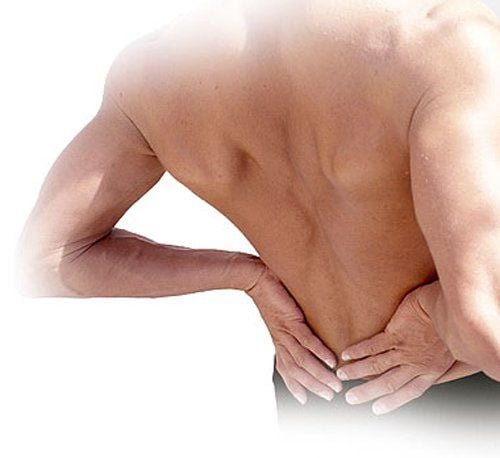
4. Prostatitis
Pelvic pain in men is a sign that men are suffering from prostatitis. The cause of this disease is an attack of bacteria. The disease can cause urethritis, pelvic pain, groin, lower abdomen because bacteria spread to these organs. The penis feels hot and uncomfortable. Patient has fever, chills, frequent urination, painful ejaculation,...5. Irritable Bowel Syndrome
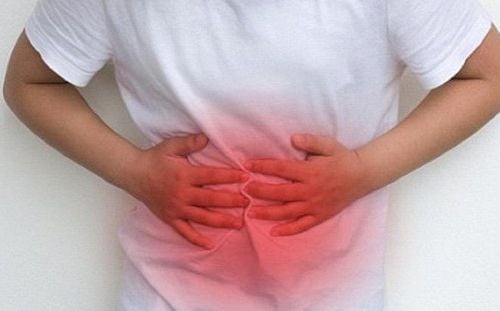
6. Appendicitis
Pelvic pain in men warns that you may be suffering from appendicitis. Patients often have dull pain in the area around the navel. The pain quickly spread to the abdomen, making the patient extremely uncomfortable. Besides, the patient also has fever, loss of appetite, vomiting, nausea, swelling of the lower abdomen,...7. Urinary system stones
Urinary tract stones cause pelvic pain in men. The size of the stone seriously affects the health of the patient. When having a urinary stone, the patient also has symptoms of difficulty urinating, blood in urine, frequent urination, ... In this case, the patient needs to have the treatment support of a doctor to be able to remove it. stones out of the body.8. Cystitis
When bacteria attack causes urinary tract infection, the patient will develop cystitis. Along with that, the patient will experience some symptoms such as difficulty urinating, frequent urination, burning pain when urinating, blood in urine, urine with an unpleasant color and odor,...9. Urethral stricture

10. Benign Prostatic Hyperplasia (BPH)
Prostatic hyperplasia is an enlarged prostate gland that compresses the urethra, causing pelvic pain in men. Patients often have difficulty urinating, frequent urination, weak bladder muscles, etc. With this disease, men need to change their lifestyle, take medicine or undergo surgical intervention to recover quickly.When to see a doctor? Pelvic pain in men takes place often, making the patient extremely tired, affecting reproductive health. Painful symptoms of the patient will increase gradually if not controlled in time. Patients should go to the hospital for examination and treatment immediately if experiencing the following symptoms
Pelvic pain in men Fever, difficulty urinating, painful urination Penile pain Vomiting, nausea, loss of appetite Body fatigue After During the examination, the patient will be performed clinical tests, pelvic X-ray. If the patient is suspected of having ankylosing spondylitis, the doctor will order the patient to have an MRI scan. Depending on the patient's medical condition, the doctor will have an appropriate treatment plan.
11. How to overcome pelvic pain in men
To overcome pelvic pain in men, patients need to visit an early doctor to determine the exact cause of the disease. Depending on the cause (urethritis, cystitis, prostatitis,...) the patient will strictly follow the instructions of the specialist. In addition, patients pay attention to some of the following issues to support treatment.
11.1 Use of Western medicine Usually, the drugs that patients use to treat pelvic pain are painkillers, non-steroidal anti-inflammatory drugs, antibiotics, muscle relaxants, epidural corticosteroids,... Patients need to take the medicine exactly as prescribed by the specialist. Absolutely do not arbitrarily buy drugs, do not treat the disease properly, making the disease worse. In the process of using the drug, if there is any abnormality in the body, the patient should notify the specialist doctor for timely treatment.
11.2 Physiotherapy Apply physical therapy methods to effectively reduce pelvic pain in men. Men can apply hot or cold compresses at the painful location. In addition, the patient should combine a lot of rest to quickly recover from the disease. In addition, patients can also perform infrared and short wave irradiation in the painful pelvic area twice a day to improve the disease.
11.3 Exercise Gentle exercises will help the pelvis to be more flexible and elastic. At the same time, these exercises also help maintain the movement function of the spine, improve muscle contraction, and promote the body's ability to recover.
Buttock exercises: The patient lies on his stomach, straightening his legs. Simultaneously, contract your glutes on both sides for about 15 seconds. Then slowly relax your body. Do this move about 2 times, 15 reps each time. Adductor hip stretch: The patient lies on his or her back with both feet on the floor and knees bent. Then, the patient extends the knees wide for about 15-30 seconds. With these movements, the patient repeats the next 3 times to help stretch the inner thigh muscles. 11.4 Changing the daily routine The patient should fully supplement the body with nutrients such as calcium, vitamins, potassium, omega 3 fats,... Limit the use of stimulants such as tobacco, beer , alcohol, coffee,... Drink enough water every day to eliminate excess substances from the body. Keep your mind at ease, avoid excessive stress and anxiety. Do not work too hard, affecting your health. Strictly follow the instructions of the specialist.
Please dial HOTLINE for more information or register for an appointment HERE. Download MyVinmec app to make appointments faster and to manage your bookings easily.
Reference source: Medicalnewstoday.com; Mayoclinic.org




